The 1973 Chinese edition of the Communist Manifesto
A perfect edition for a perfect text.
A couple of Chinese translations of the Communist manifesto are worth collecting, starting with the first of them, by 陳望道 Chen Wangdao (1891-1977), published in Shanghai in 1920 with the three characters for “Communist Party” printed out of order on the cover (共黨產宣言 instead of 共產黨宣言).
A second one is the fine woodblock edition, published in 1973, also in Shanghai, at a time when the People’s Republic of China was undergoing one of its most profound crises. As the Cultural Revolution (1966-1976) started, the campaign against the Four Olds began (Old Customs, Old Culture, Old Habits, and Old Ideas) and traditional culture was actively targeted and destroyed.
It is rather remarkable that such a refined xylographic thread-bound book, a manifestation of the so-called old culture, was manufactured during these years of chaos, by the few aged woodcutters still active at the Shanghai Fine Arts Publishing House 上海書畫社 (in 1977, this publisher would also produce the 毛主席詩詞三十九首 Thirty-nine poems by Chairman Mao in the same way).
Choices made by the editors of this volume echo closely the publications of the Song dynasty (960-1279), the golden age of Chinese publishing. The so-called “Imitation of the Song” (仿宋) font types were favoured to engrave the characters, content is arranged vertically, reading from right to left, each page counts ten columns of twenty characters, notes are given in doubled columns of smaller characters. Like in traditional books, the “Block Heart” (版心 – the center column) features the running title, the leaf number in Chinese characters, and the “Fish Tail” (魚尾 – small segments shaped in the form of a “V” serving as a guide to fold the page before binding).
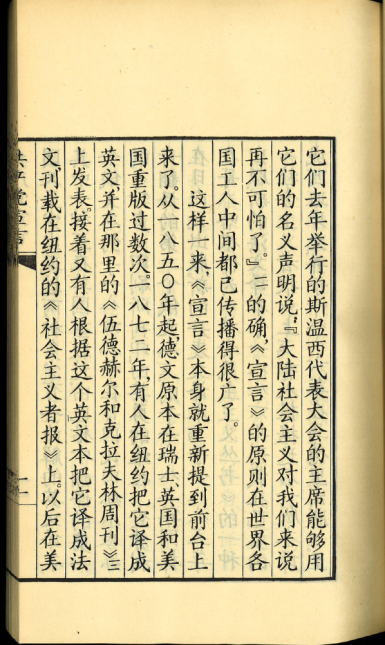

Although of traditional make, the item does feature innovative aspects, making this edition of the Communist Manifesto a special case in the history of Chinese woodblock printing. The reversed characters directly engraved on woodblocks were not the traditional ones, encountered in the Song dynasty books, but the simplified ones in use in China since the middle of the 1950s and the first reform of the Chinese writing system. They are occasionally seconded by the roman alphabet set at 90 degrees where western references are mentioned. Indent, paragraph breaks and punctuation - absent from old Chinese books - were also introduced.
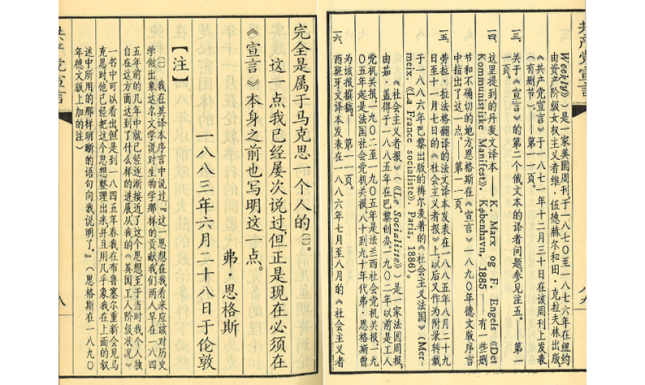

The best quality handmade paper and ink were used to manufacture this classic of the communist canon, created to be presented as a gift to high-level party officials and foreign visitors. The text, however, was based on an edition that circulated among the common people (14th printing of the 6th edition of the Manifesto issued by the 人民出版社 People's Publishing House in 1964). The contrast between the two editions is therefore striking.
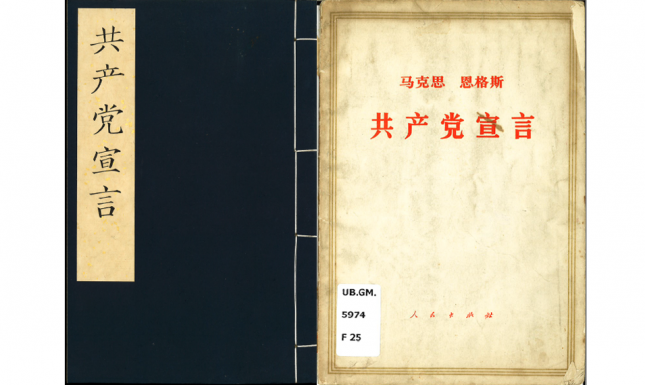

The dirtiness of the cover, stains on the pages, annotations, and sentences underlined in pencil in the popular edition, indicate clearly the difference between these objects in terms of usage and prestige.
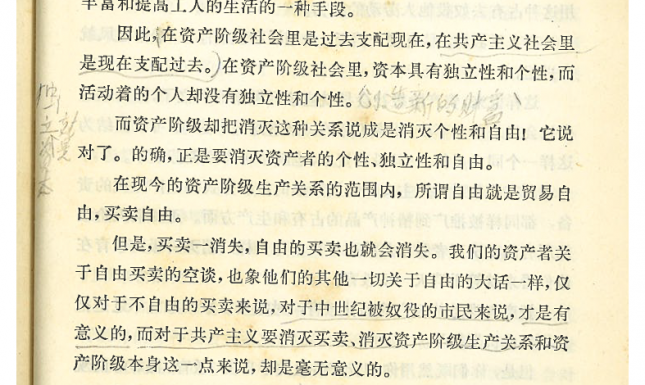

On the one hand, we have a Manifesto produced according to traditional publishing standards, certainly in limited numbers and intended to be collected and cherished by the elite as the quintessential Chinese book. On the other, we have a cheap edition (price = 0,18 yuan), produced by the mechanized printing industry, with a large circulation (500.000 exemplars of the 1978 edition of the Manifesto were printed), meant to be read and studied by the masses as a classic of communist literature.
Both chant the same slogan in red ink on their opening page: “Workers of the World Unite!”, but they obviously follow different axis.
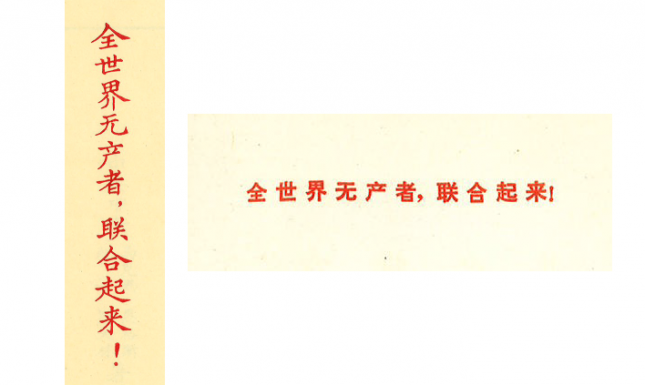

Further Reading:
Yang, L. Y. (2019). Archaistic Perfection: The Production of the Woodblock-Printed Edition of The Communist Manifesto in 1970s China. East Asian Publishing and Society, 2019(2), 151-189.


